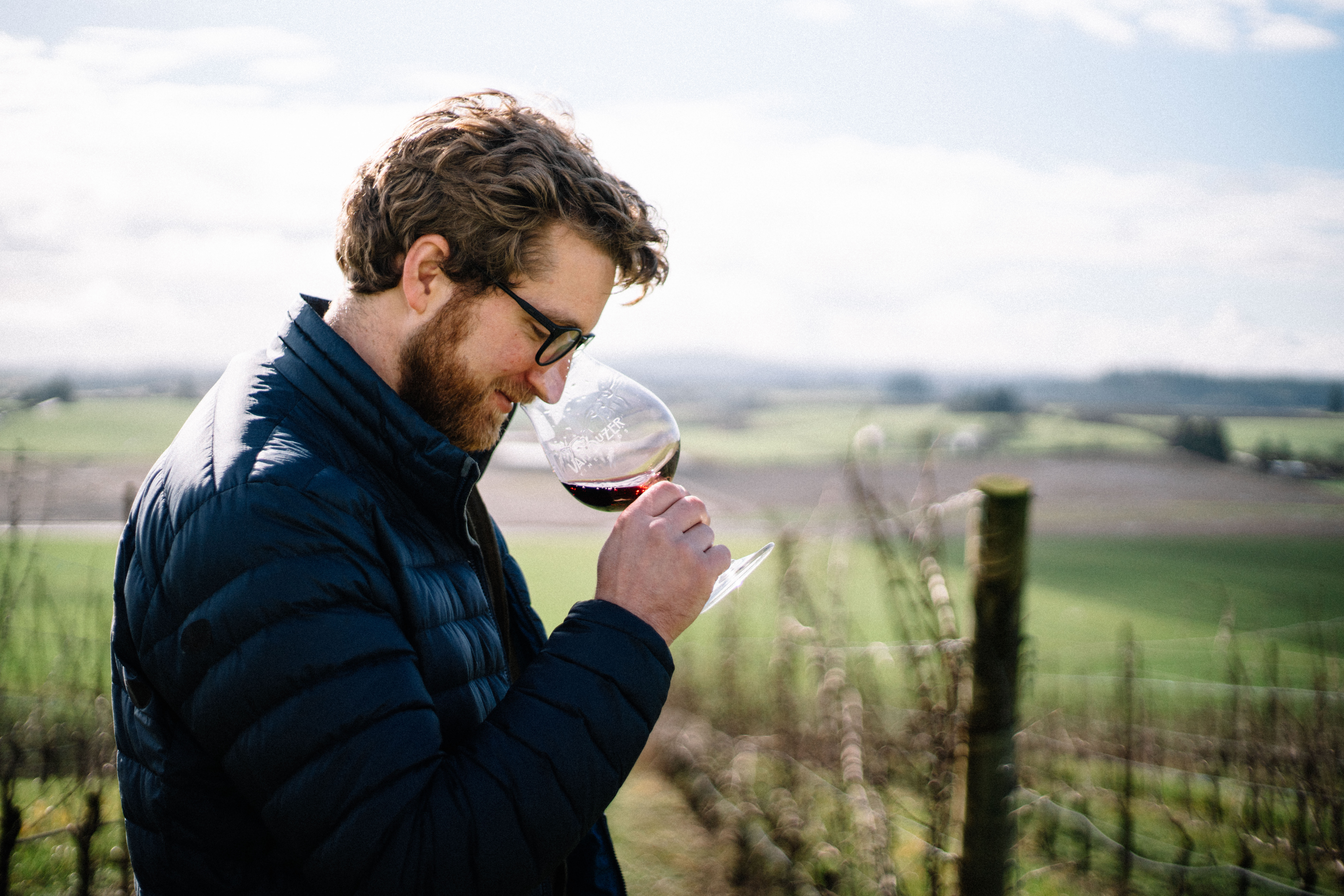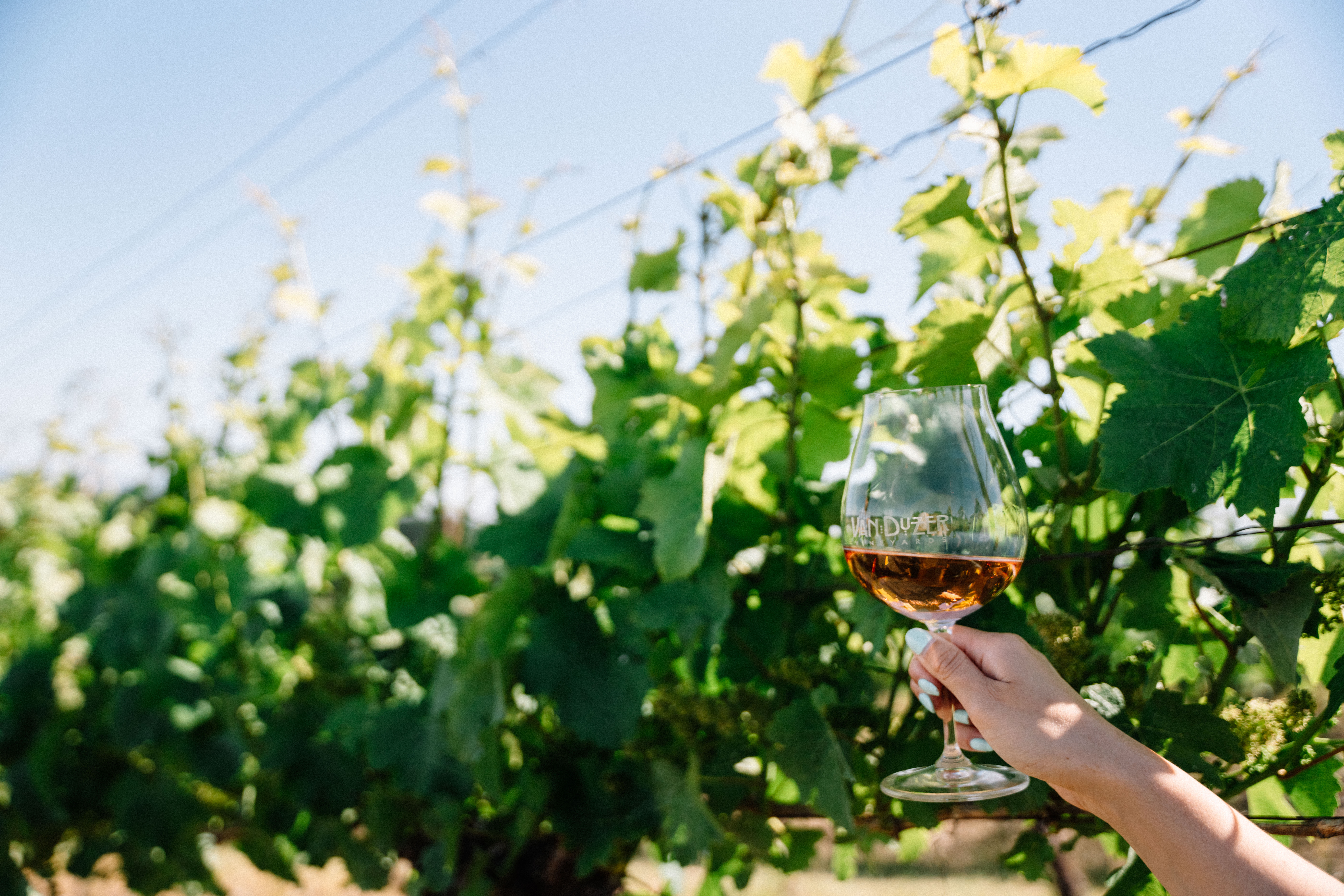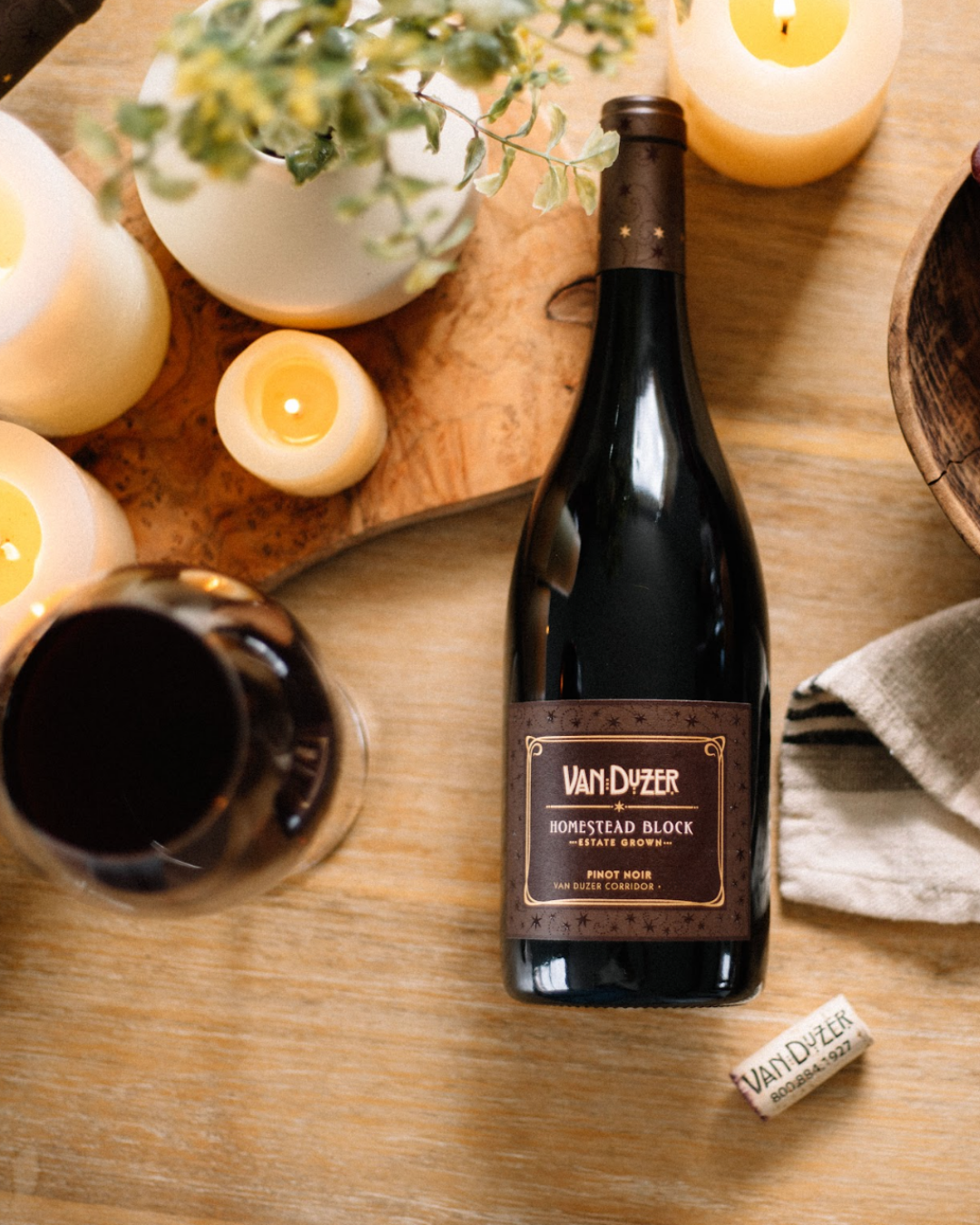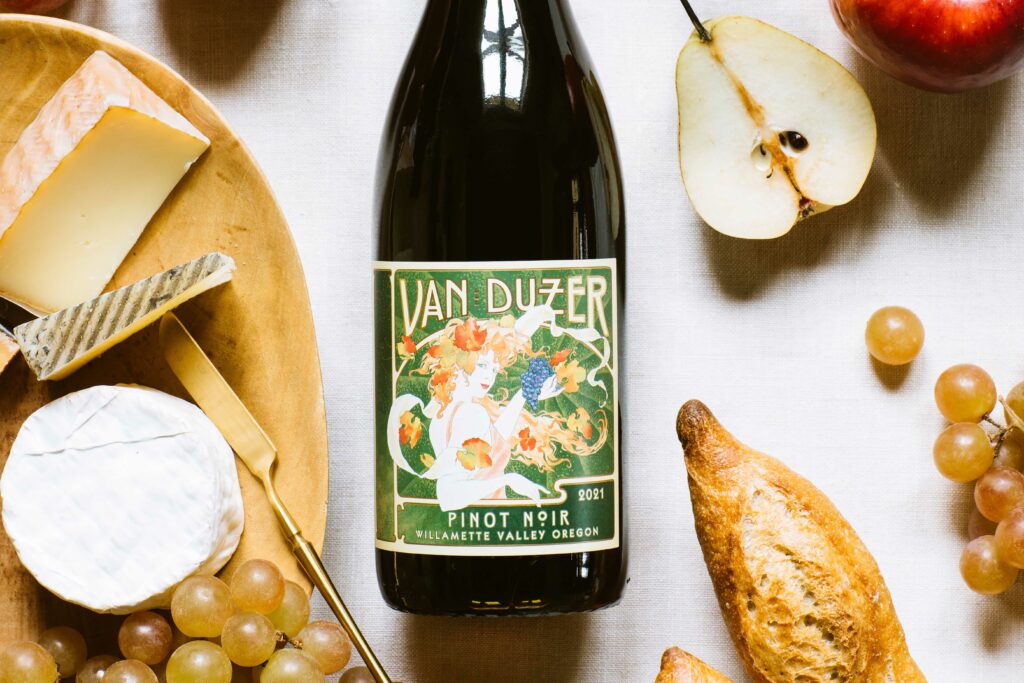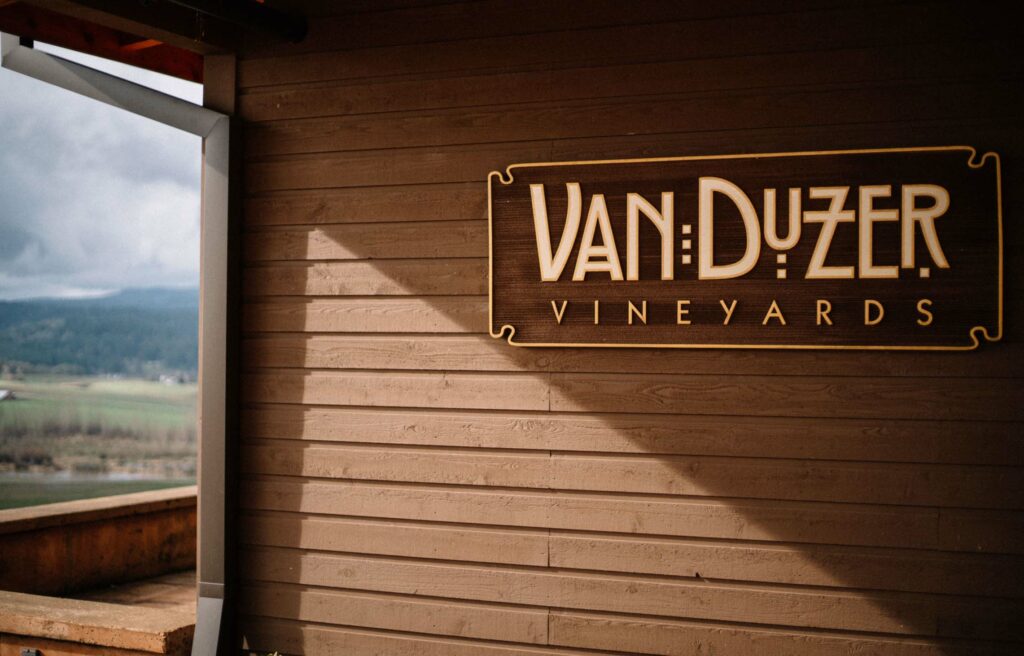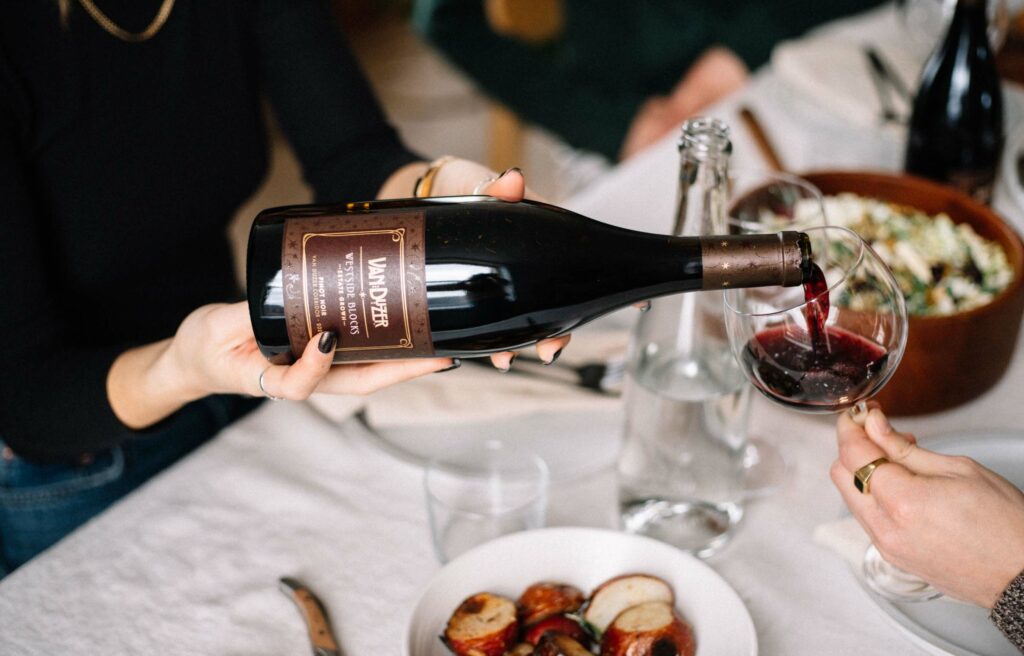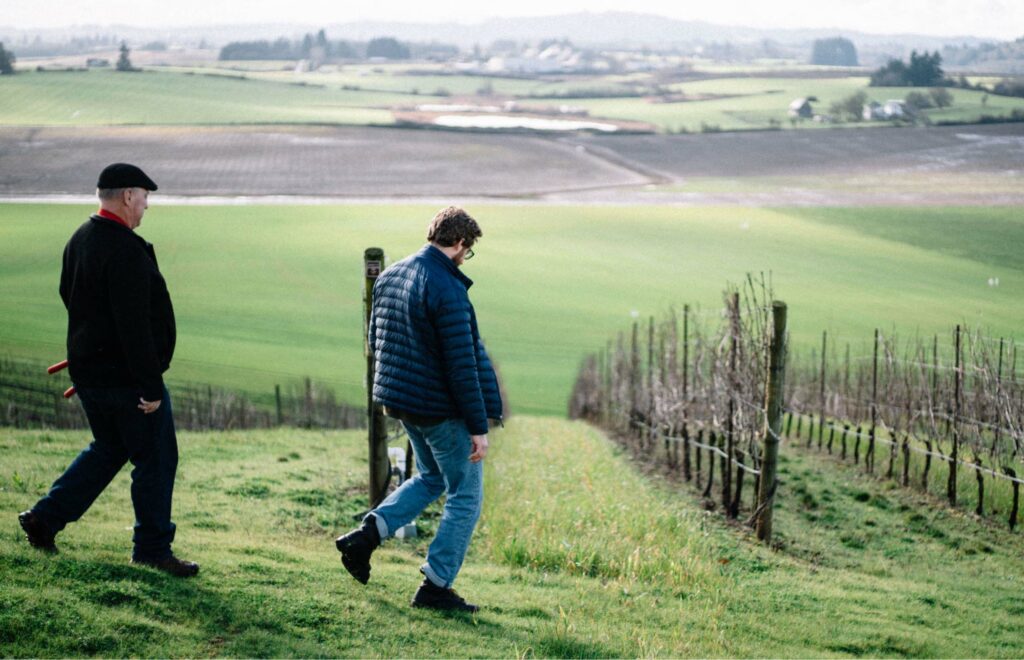Here in the Van Duzer Corridor AVA, located in Oregon’s Willamette Valley, we’re renowned for the distinct microclimate, defined by wind, that plays a pivotal role in shaping the quality and flavor profile of the wines produced there. It’s one of the factors that drew us here 25 years ago – and something that makes our wine unique.
What exactly is a microclimate?
Let’s start at the beginning with defining what, exactly, we mean when we say ‘microclimate’. We’re referring to the specific climate conditions within a small area that can differ significantly from the surrounding region. In the context of vineyards, microclimate encompasses factors such as temperature, humidity, rainfall, sunlight exposure, and wind patterns. We believe that these variables have a profound impact on the development of grapevines and, ultimately, the quality of the grapes they produce.
The Van Duzer Corridor AVA: A Unique Site
The Van Duzer Corridor AVA, where our estate vineyard is located, is a relatively small (and relatively new) American Viticultural Area located within the larger Willamette Valley AVA in Oregon. What sets this region apart is the presence of the Van Duzer Corridor, a break in the Coast Range that allows cool marine air to flow inland from the Pacific Ocean. This maritime influence creates a distinctive microclimate characterized by cooler temperatures and significant diurnal temperature variations. We can feel those winds blow through, and if you come visit us for a tasting you’ll feel them too.
While the Van Duzer Corridor AVA is a microclimate in and of itself, there are even smaller distinct microclimates within our vineyard. As our winemaker, Eric Misiewicz, explains; “our vineyards have been thoughtfully laid out so the microclimates are respected naturally by block design. I define a microclimate by the following factors: soil type, aspect, elevation profile, water availability, and wind impact.”
Eric goes on to say; “Here at our estate vineyard, we have 6 distinct microclimates which are defined by soil depth, aspect, water availability and wind imapct. Each of these microclimates produces wines that are very distinct. One of the reasons I love to make wine here!”
Cooler Temperatures and Extended Growing Season
One of the most significant benefits of the Van Duzer Corridor microclimate is the moderation of temperatures during the growing season. The cool, maritime influence helps to slow down the ripening process of the grapes, allowing for a longer hang time on the vines. This extended growing season contributes to the development of complex flavors in the grapes and helps to retain natural acidity, a crucial component in the structure and balance of quality wines.
The diurnal temperature variations, the difference between daytime and nighttime temperatures, in our vineyard are instrumental in shaping the character of the grapes. Warmer daytime temperatures encourage photosynthesis and sugar accumulation in the grapes, while cooler nights help to preserve acidity levels. This natural balance between sugar ripeness and acidity is essential for producing well-balanced wines with depth and complexity.
Wind Patterns and Disease Prevention
The consistent wind patterns that sweep through the Van Duzer Corridor play a dual role in vineyard management. First, the cooling effect of the winds helps to prevent the grapes from overheating during the hot summer months, maintaining a more balanced environment for grape development. Second, the airflow reduces humidity levels around the grape clusters. This minimizes the risk of fungal diseases such as mildew and botrytis. This natural protection allows for healthier vines and higher quality grapes at harvest.
But can you taste microclimate in the glass?
We believe that the culmination of these factors results in wines from the Van Duzer Corridor AVA that exhibit a distinct sense of terroir and exceptional quality. Additionally, we chose to plant cool-climate grape varieties such as Pinot Noir and Chardonnay which we believe thrive in this microclimate. Our wines are lively and fresh with and a refreshing crispness and complexity that sets them apart from wines produced in warmer regions.
In the world of winemaking, the significance of microclimate cannot be overstated. The Van Duzer Corridor AVA, with its unique combination of cool temperatures, diurnal temperature variations, wind patterns, and marine-sediment soils, exemplifies how microclimate influences the expression of site. The wines we’re honored to produce reflect the essence of the land; a testament to the power of microclimate in shaping the world of wine. Want to taste these microclimates for yourself? Experience them in the wines of our limited release Block Collection available here.

